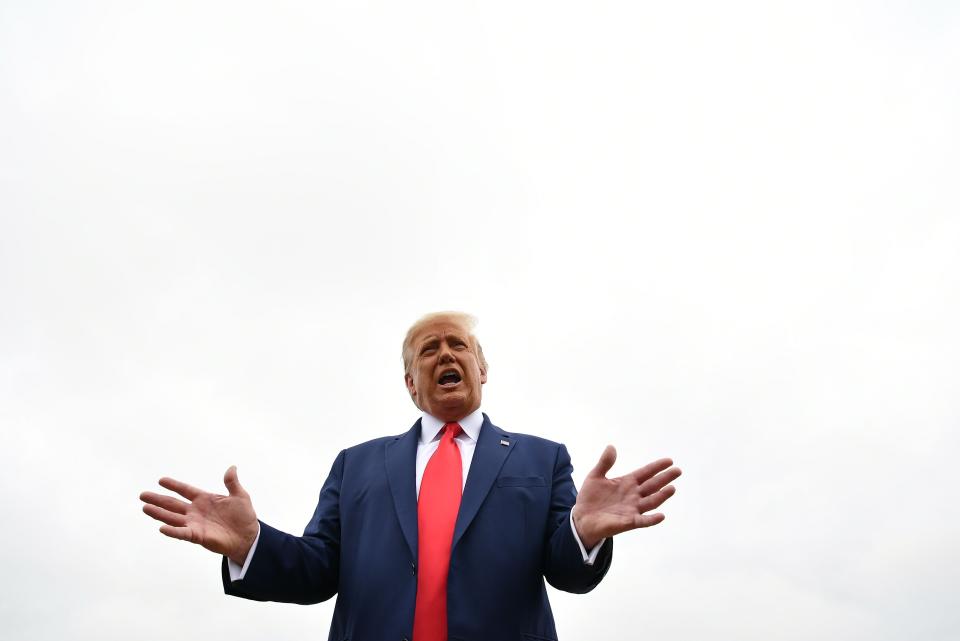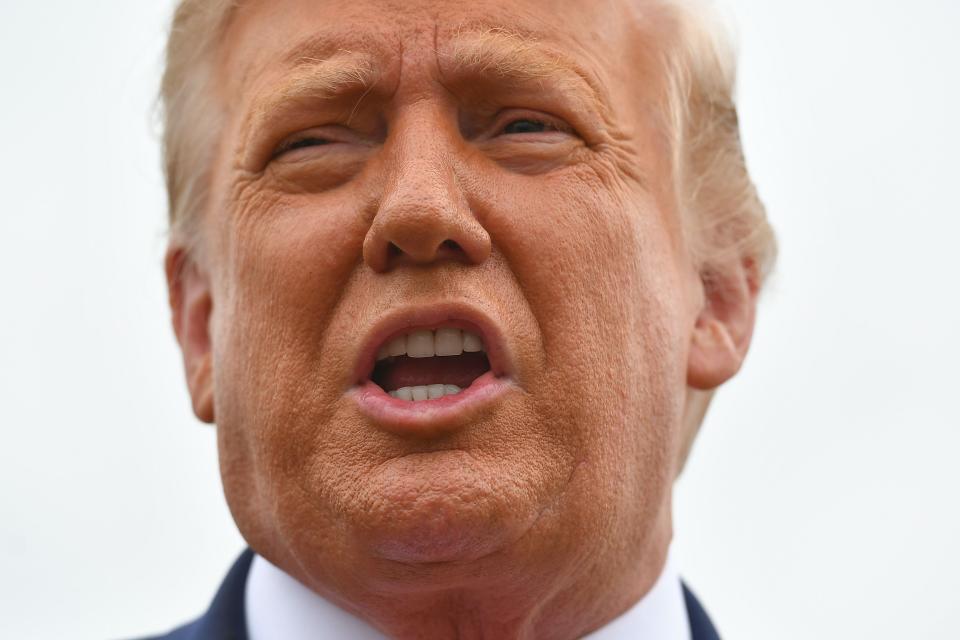Trump says he sought to avoid 'panic' over COVID-19, but fearmongering is central to his campaign
President Trump said he intentionally misled the public about the threat of the coronavirus, which has so far killed nearly 200,000 Americans, because he didn’t want to “create panic.”
“I don’t want people to be frightened,” Trump said at the White House on Wednesday, shortly after the release of audio excerpts from his interviews with Washington Post journalist Bob Woodward for Woodward’s forthcoming book, “Rage.” On the tapes, Trump acknowledged privately to Woodward, as far back as February and March, that he knew how dangerous the coronavirus was but wanted to “play it down.”
“I don’t want to create panic,” Trump told reporters. “And certainly I’m not going to drive this country or the world into a frenzy.”
Newsletter: The Yodel
Trusted news and daily delights, right in your inbox
See for yourself — The Yodel is the go-to source for daily news, entertainment and feel-good stories.
“I can’t be jumping up and down and scaring people,” he told Fox News host Sean Hannity on Wednesday night. “I don’t want to scare people.”
But for Trump — who launched his 2016 campaign for president by warning that Mexico was sending “rapists” across the southern border — fearmongering is an essential part of his message.
His administration, campaign and tweets continually feed voters’ darkest suspicions about immigrants, minorities, terrorists, “agitators,” criminal gangs and, of course, Democrats.

Trump was in full panic mode on Twitter Thursday morning.
“The Democrats never even mentioned the words LAW & ORDER at their National Convention,” he tweeted to his 85.8 million Twitter followers. “That’s where they are coming from. If I don’t win, America’s Suburbs will be OVERRUN with Low Income Projects, Anarchists, Agitators, Looters and, of course, ‘Friendly Protesters.’”
Trump and his campaign have spent weeks portraying Joe Biden’s policies as a threat to America’s suburbs, using the images of violence in clashes between law enforcement and Black Lives Matter protesters in Portland, Ore., Kenosha, Wis., and elsewhere to push the untrue claim that the former vice president wants to “defund” the police and repeal the Second Amendment. (Biden does not want to do either of those things.)
There is, of course, no reason to think that a Biden presidency would result in more violence than has occurred under Trump.
That has not stopped Trump from suggesting a group of people from “the dark shadows” are controlling the Democratic nominee.
In an interview with Fox News host Laura Ingraham in late August, the president claimed a plane “almost completely loaded with thugs” had been sent to disrupt the Republican National Convention.
“We had somebody get on a plane from a certain city this weekend,” he said. “And in the plane it was almost completely loaded with thugs, wearing these dark uniforms, black uniforms, with gear and this and that.” Trump added that the matter was “under investigation right now.”
When Ingraham asked for more information about the flight, the president said, “I’ll tell you sometime.” (There is no evidence of any such flight; the story Trump relayed appears to have come from a months-old Facebook post.)

He used the same fearmongering tactic ahead of the 2018 midterm elections, warning that a caravan of migrants — one filled with “criminals and unknown Middle Easterners” disguised as asylum seekers — was making its way from Central America through Mexico toward the U.S. border. There was no evidence that “criminals and unknown Middle Easterners” had infiltrated the caravan.
Nor was there evidence of the massive voter fraud that Trump falsely claimed led to Hillary Clinton’s victory over him in the popular vote and might result in the 2020 election being “rigged” against him.
The president has also tried to sow fears about MS-13 gang members coming across the southern border — so many that his administration is removing them “by the thousands” from “at least 20 different American states.”
Trump has used the group and its gory violence to prove the need for a border wall.
“These aren’t people,” Trump said during a May 2018 White House roundtable criticizing so-called sanctuary cities. “They’re animals.”
___
Read more from Yahoo News:
